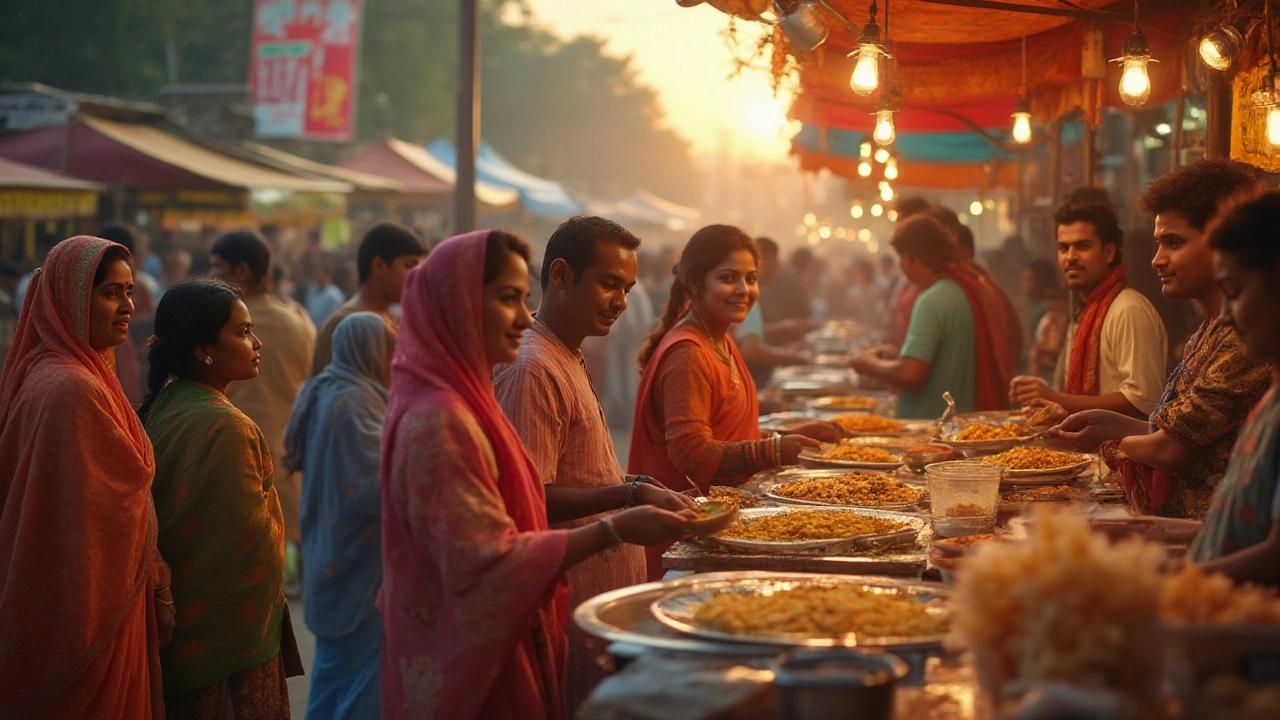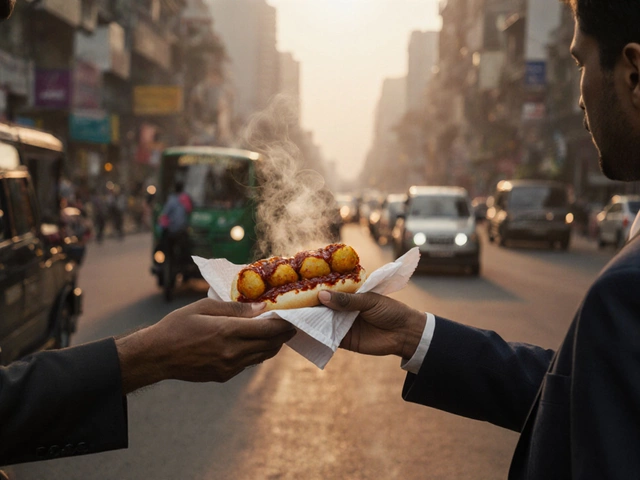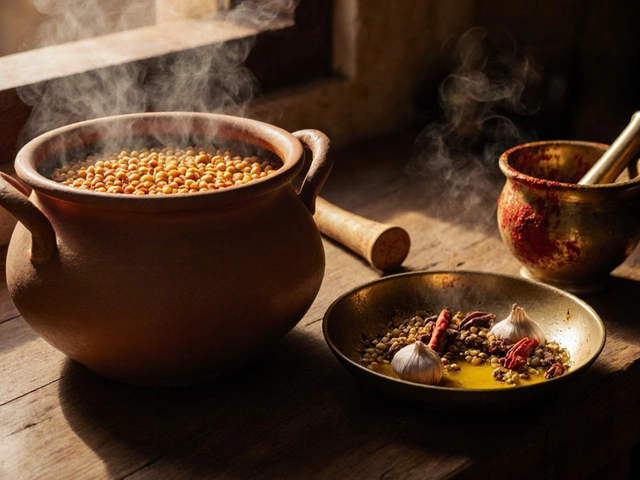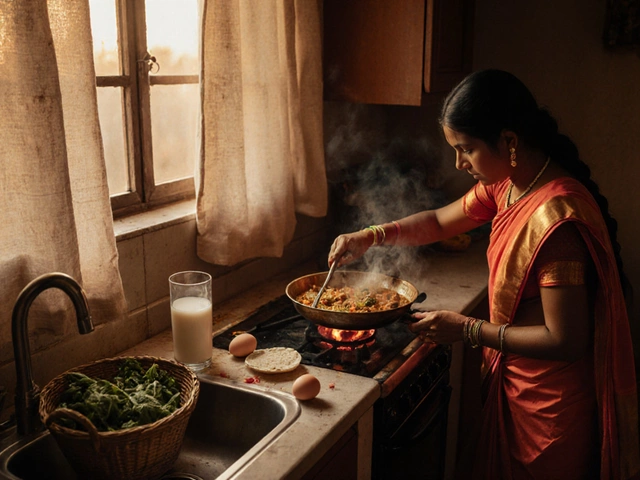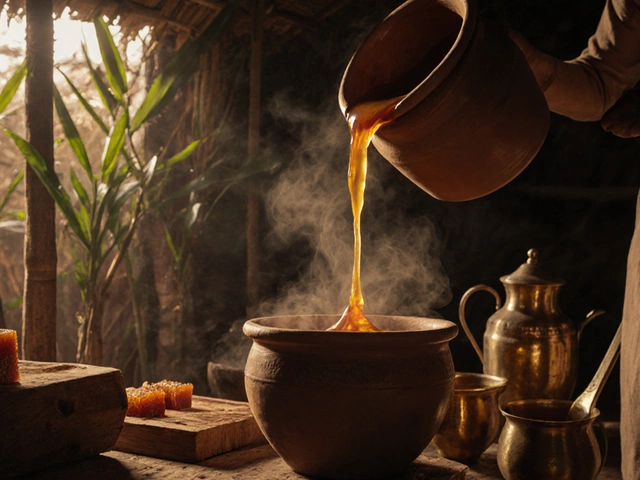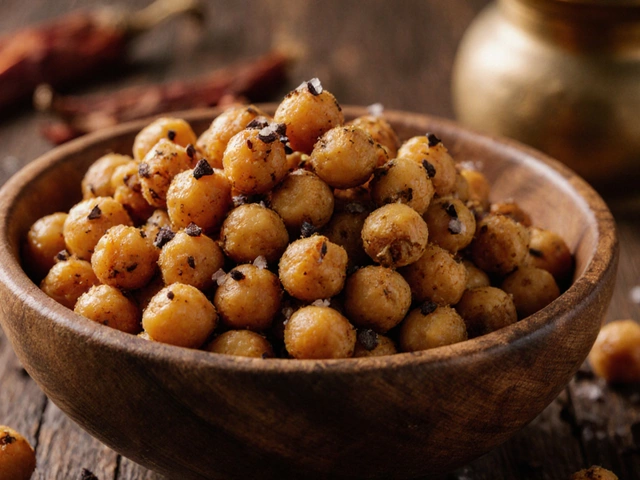You see that sizzling fryer on the Delhi roadside, the steam billowing up over samosas, that swirl of fragrance—spices, oil, something almost sweet. Your stomach rumbles. But is it safe for foreigners, or are you just asking for 72 hours of regrettable memories? Let’s be honest: Indian street food has a reputation. Some hear whispers of stomach bugs, Delhi belly, warnings from lonely planet message boards. Others, though, promise you’ve never really visited India unless you’ve crunched into pani puri while standing on a street corner.
Understanding Street Food Safety in India: The Real Risks vs. Rumours
Let’s clear the fog: Is eating street food in India a gamble? It depends—sort of like eating raw oysters back in Brighton or dodgy kebabs after midnight. But it’s not Russian roulette, despite what panicked travel blogs claim. The biggest sources of trouble are usually water (especially ice), mishandled dairy, or food that’s been sitting too long. These risks aren’t unique to India—street food around the world has these same troublemakers.
Most cases of travelers’ stomach issues come not from spices, but from unseen microbes—bacteria, parasites, or viruses entering via contaminated water or food. India’s climate is hot. Food left exposed can become a microbe magnet in mere hours. Local immunity means what barely fazes a local could flatten a visitor. Still, that doesn’t mean street food’s a disaster waiting to happen. A study done in 2022 by the Indian Council of Medical Research found that street food samples in major cities tested positive for bacteria at 16%—lower than some fast food chains in the same study. Surprised?
If you look at food safety campaigns like “Clean Street Food Hub” from India’s Food Safety and Standards Authority, you’ll notice a real push to educate vendors and standardise hygiene. Cities like Ahmedabad and Indore have areas officially certified as safe zones. Sellers attend food handling workshops, and some even display hygiene certificates—something most British chippies don’t bother with.
The perception that all street food is “dirty” isn’t totally fair. Often, the problem is that travelers don’t know which stalls are popular with locals, or how to spot warning signs. The risk is real if you’re careless, but plenty of tourists eat from carts daily and come away with nothing but delicious stories.
| City | Certified Clean Street Food Zones (2025) | Reported Foodborne Illness Cases (per 1000 tourists) |
|---|---|---|
| Delhi | 8 | 14 |
| Jaipur | 4 | 9 |
| Mumbai | 11 | 8 |
| Kolkata | 6 | 11 |
| Brighton (for comparison) | - | 2 |
If you keep your wits about you—watch where locals queue, look for steaming hot fresh-cooked items, sidestep ice in drinks and pre-cut fruit—the odds tilt massively in your favour. It’s really about smart choices, not skipping street food altogether.
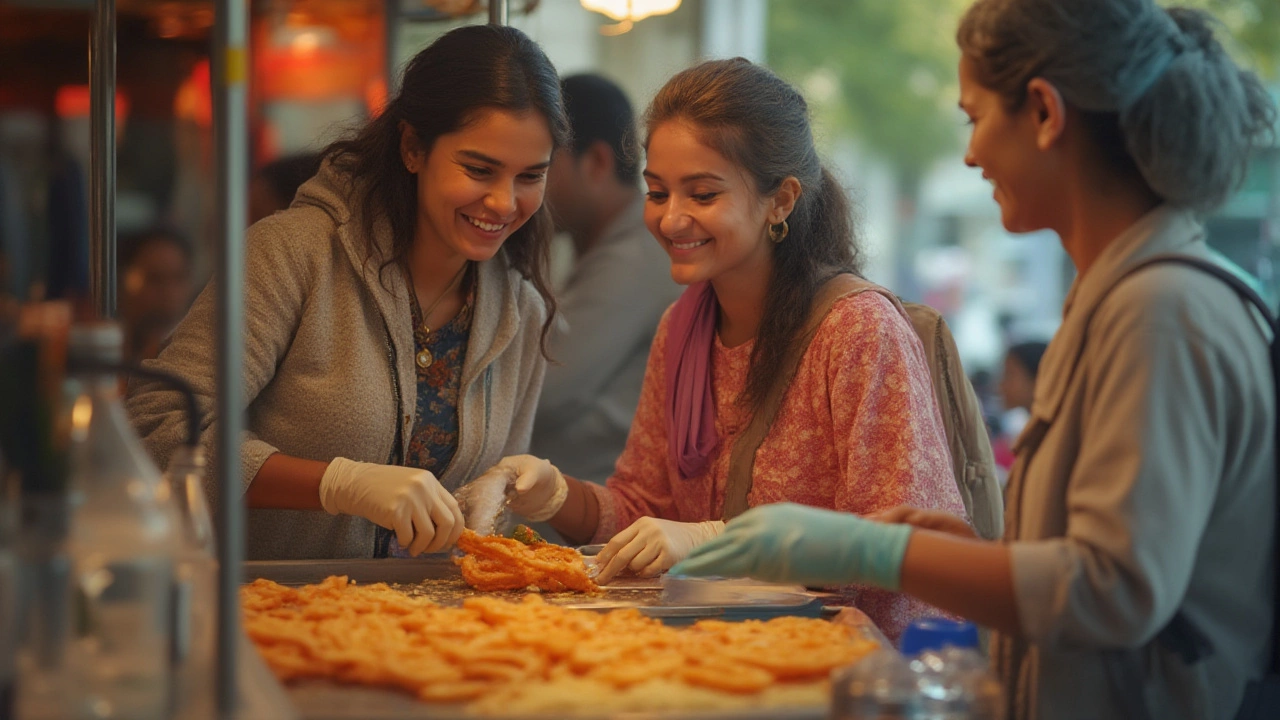
What to Eat—and What to Avoid: Popular Indian Street Food Options for Tourists
With thousands of options, picking from an Indian street food spread can freeze you in your tracks—almost too much choice. But some dishes are safer bets for newbies. Anything deep-fried and piping hot is usually a reliable friend: samosas, pakoras, kachoris, jalebis. You’re watching them hit sizzling oil, which kills most bugs on contact. If you see vendors making it right in front of you, that’s a huge green flag.
Fresh-cooked dosas, parathas, or tandoori snacks also tick the safety box, especially when they sizzle onto your plate direct from the stove. Go for the busiest stall. It’s not just about taste—it’s constant turnover, meaning what you eat probably hasn’t been hanging out in the sun all day.
Chaat—like pani puri, bhel puri, aloo tikki—can be irresistible for adventurous eaters. These are trickier: they often contain chutneys or yoghurt, sometimes mixed with water. If you want to try them, scope out stalls busy with local families; better yet, ask the vendor to make yours fresh (and to skip raw onions or uncovered water if you’re nervous). In many big cities, you can even get “mineral water pani puri,” where the water used is from a sealed bottle—just ask.
Let’s talk drinks. Skip the roadside lassi unless it’s made fresh in front of you, poured from a sealed bottle, or served at a reputable spot. Fresh coconut water straight from the shell is a safer hydrating option—you watch them crack open the nut, no one’s adding ice. Chai wallahs (tea vendors) often boil their mixtures for ages, sterilizing any nasties. Watch for super popular chai stalls, where the turnover is so fierce you’ll barely see the cups hit the counter before someone else nabs them.
Now, what should you avoid? Here’s my quick list:
- Anything that’s been sitting open on a counter or where flies gather.
- Unpeeled fruits or vegetables washed in tap water.
- Items topped or garnished with ice, unless you actually saw the water boiled or come from a sealed bottle.
- Food from super quiet stalls—they may not turn things over quickly, so stuff sits and gets risky.
- Raw chutneys made with uncooked ingredients and unboiled water.
It might sound scary, but you’ll often spot people buying golgappas or bhajis in uniforms on their lunch break—that’s a pretty safe sign this stall’s trustworthy. The closer you are to a popular school, hospital, or market, the more local watchdogs keep food risks low. Word travels fast in India, and a vendor known for making people sick would clear out quick.
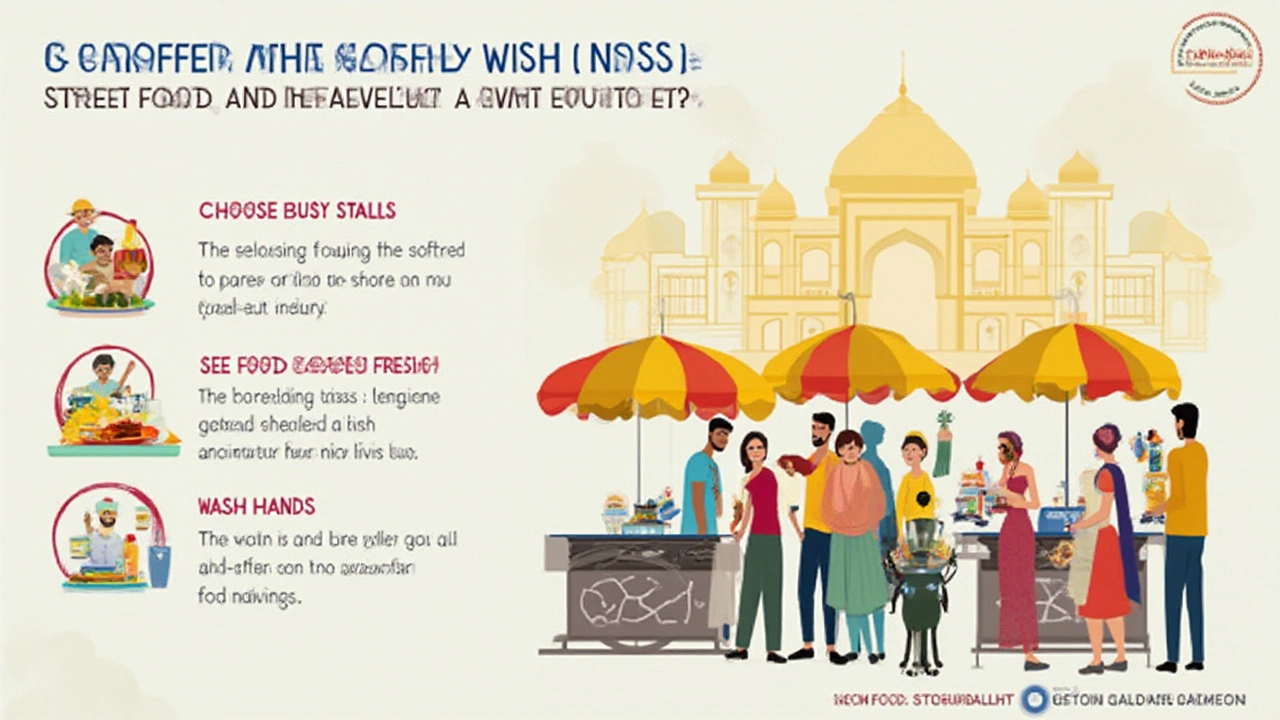
Street Food Survival Guide: Tips from Locals, Travellers & Foodies
Every seasoned traveler in India has their street food gospel. Some carry packs of wet wipes, others swear by a daily probiotic yogurt, and a few seem to have cast-iron stomachs. Here’s what really works—compiled from locals, expats, and serial snackers.
Rule number one: trust your senses. If it smells off, walk away. Use your eyes—if the oil looks dark and ancient, or the cups are getting just a rinse in a dirty tub, choose another vendor. Nearly every Indian city now has at least one food stall with gloves, cashless payment, and even QR codes for menus. That “modern” approach usually lines up with higher food safety standards.
Keep hand sanitiser handy. Wash or sanitise before you eat, especially finger foods. Indians do this instinctively, and it pays off big time. Travel with a little packet of Imodium or a probiotic isn’t overkill—it’s sensible insurance, like bug spray or sunscreen. Don’t feel embarrassed by taking these precautions.
Eat where people look like you. I know that sounds odd, but stalls busy with women, children, and office workers tend to be safer. If it’s just groups of bored auto-rickshaw drivers chain-smoking, maybe move along. Watch how the vendor handles money and food—do they use separate hands? This little habit cuts down on germs hopping from cash to your lunch.
Make your first street food meal something hot and simple. Your gut gets a chance to adjust slowly. Those who eat mostly bland food at home sometimes do better if they ramp up the adventure, not cannonball into the spiciest thing at a roadside thali cart. If you’re nervous, try street food in bigger cities first—hygiene enforcement is stricter, and if you do need help, you’ll find plenty.
There’s a saying among local foodies: “If in doubt, order chai.” Boiled tea is one of the safest pick-me-ups, and you’ll win fast friends chatting with the regulars. Ask for recommendations; most Indians will love steering you right and sharing their favorite stalls. Indians take pride in their food scenes, especially in cities like Mumbai, Amritsar, Hyderabad, or Lucknow—each has specialties you can miss if you stick only to hotel restaurants.
A quick look at numbers: as of spring 2025, several Indian metros have “Eat Right” zones where food carts are checked weekly. Indian newspapers reported a dip of over 40% in tourist food poisoning cases compared to 2020—a huge improvement worth celebrating.
It’s not just about food safety; eating off the street lets you get close to India in a way five-star dining can’t. You’ll see the rhythm of daily life and trade stories with people you’d never meet otherwise. Street food brings out India’s wild side—the riot of flavors, the inventiveness, the spices, and the regional secrets. Just remember your wet wipes, pick your stalls with local crowds, and enjoy—that’s how street food in India goes from risky rumor to delicious memory.
Want my last piece of advice? The best meals in India might be the cheapest, eaten standing on a busy street with people all around, reaching for jalebis or crunchy pakora. If you follow a little common sense, you’ll almost surely avoid trouble and get to brag you did India right. Street food isn’t just safe; it’s the heart of the adventure.
